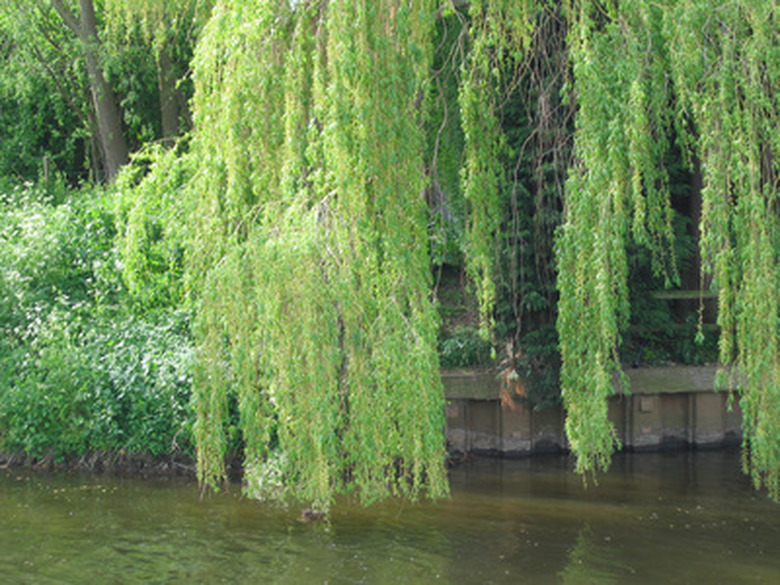Types Of Weeping Willows
The weeping willow is a fast-growing tree valued for its graceful shape and the shade it provides. It grows successfully in USDA climate zones 4 though 9 and reaches an adult height of 50 feet or more, with a 35-foot spread. It's adaptable and can grow in full or part sun in a wide range of soil types. Willow trees are moderately drought-tolerant yet can absorb standing water with no harm to the tree.
Salix Babylonica
This is the classic weeping willow tree that is favored in home landscaping and as a street tree. It does especially well, and looks especially attractive, when grown next to a pond or other water source. With its long, thin branches and yellowish leaves, it is one of the first trees of spring to develop leaves and one of the last to drop them in fall. It produces little, if any, tree litter.
- The weeping willow is a fast-growing tree valued for its graceful shape and the shade it provides.
- This is the classic weeping willow tree that is favored in home landscaping and as a street tree.
Golden Weeping Willow
The golden weeping willow is a cross between Salix babylonica and Salix alba, the white willow. It grows to 80 feet tall and has a wide canopy and graceful golden branches, making it a current favorite for home gardens and other landscaping. This willow tree rarely needs pruning, except to remove dead and damaged branches and those that form within 6 feet of the ground. The Backyard Gardener website cautions that this tree can damage septic systems and that it should be kept far away from them when planted.
Salix Alba
The white willow grows to about 75 feet and sports downy leaves in green and white. This tree is very popular in England and Ireland, where it has been introduced in many different environmental conditions. White willow bark has been used medicinally for centuries, as it contains the active ingredient in aspirin, salicylic acid.
- The golden weeping willow is a cross between Salix babylonica and Salix alba, the white willow.
- This willow tree rarely needs pruning, except to remove dead and damaged branches and those that form within 6 feet of the ground.
Salix Caprea Pendula
The dwarf weeping willow is also called the Kilmarnock willow. It is highly ornamental and works well in smaller spaces than other types of weeping willows, which often become too large for residential lots. With its compact size of only 5 to 6 feet, this tree survives best in frost-free climates. In winter, when the tree is dormant, prune shoots that emerge from the main trunk and all dead and damaged branches. JPR Willow in England recommends pruning all branches 4/5 of the way to the tree's main trunk every four to five years.
